
What is hot-desking and what are the benefits?
Definition of Hot-Desking
Hot-desking is a modern office practice that involves multiple employees using a single physical workstation or desk during different time periods. Unlike traditional office setups where each employee has a designated desk, hot-desking allows for a more flexible and dynamic use of office space. This approach is particularly appealing in environments where employees are not required to be in the office at all times, such as in organizations that support remote work or have employees on rotational schedules. By eliminating the assignment of permanent desks, hot-desking maximizes the utilization of office space, reduces the amount of required floor space, and can lead to significant cost savings for businesses. It also encourages a more fluid and collaborative work environment, where employees have the opportunity to interact with different colleagues each day, potentially fostering innovation and cross-pollination of ideas.
In this story
History and Evolution
The concept of hot-desking has its roots in the late 20th century, evolving as businesses began to recognize the need for more flexible work environments due to changing workforce dynamics. Initially, hot-desking was driven by the need to accommodate mobile workers and reduce real estate costs. Its adoption was further fueled by technological advancements, such as the proliferation of laptops, mobile devices, and cloud-based applications, which enabled employees to work efficiently without being tethered to a specific location.
The evolution of hot-desking has mirrored broader trends in the workplace, such as the rise of open-plan offices and the increasing prevalence of remote work. As businesses have become more global and the workforce more mobile, hot-desking has emerged as a practical solution to the challenges of managing a modern office. More recently, the COVID-19 pandemic accelerated the adoption of flexible work arrangements, including hot-desking, as organizations sought ways to maintain continuity while adhering to health guidelines and social distancing measures.
Today, hot-desking is an integral part of many contemporary office designs, particularly in sectors that emphasize innovation, collaboration, and agility. As companies continue to adapt to the evolving needs of their workforce, hot-desking is likely to remain a prominent feature of the modern work environment, offering a versatile solution that aligns with the demands of both businesses and employees.
How Hot-Desking Works

Setup and Management
The successful implementation of hot-desking requires thoughtful setup and effective management to ensure that it meets the needs of both the organization and its employees. The primary goal is to create a flexible environment where workstations are shared among employees rather than assigned permanently. To achieve this, offices are typically organized into various zones, each designed to cater to different types of work—such as quiet zones for focused tasks, collaborative areas for group work, and general workstations for everyday activities.
The management of these spaces involves establishing clear guidelines and protocols to facilitate smooth transitions between users. Employees may be required to reserve desks in advance using a booking system to ensure availability, especially during peak hours. Cleaning protocols are also essential, ensuring that workstations remain tidy and hygienic for the next user. These measures help to maintain order and efficiency, preventing potential conflicts over space usage and ensuring that the office environment remains conducive to productivity.
Technology and Tools Used
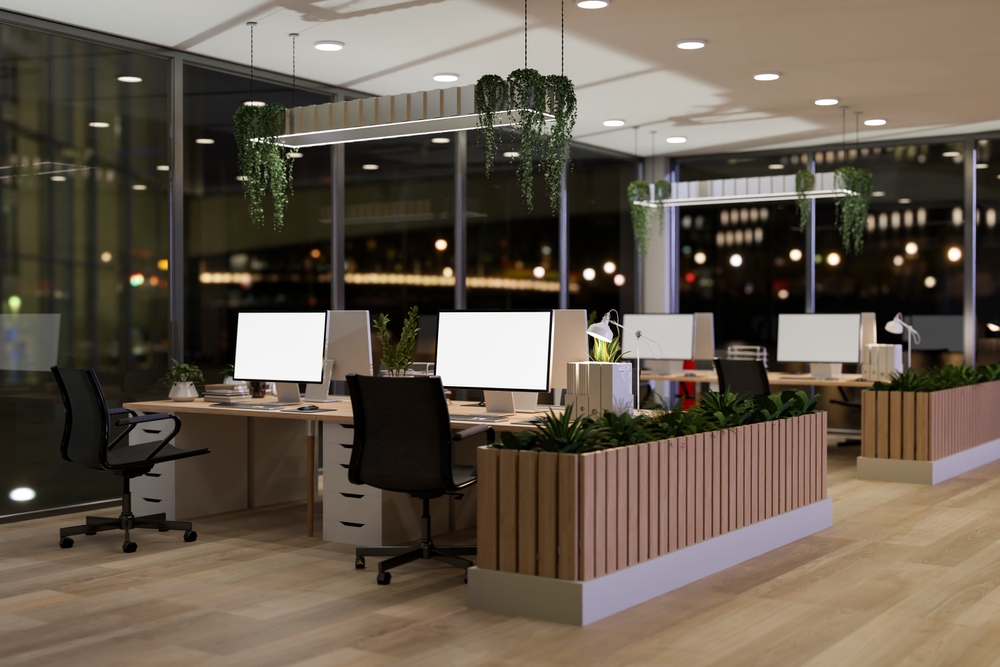
Technology plays a crucial role in the effective functioning of hot-desking environments, providing the tools necessary for seamless operation and communication. Central to this setup are cloud-based applications and digital platforms that enable employees to access files and collaborate from anywhere. These tools reduce dependency on physical storage and allow employees to work fluidly without needing to be tied to a specific location.
Moreover, efficient hot-desking systems rely on technology-driven solutions such as desk booking software and mobile apps, which allow employees to reserve workstations in advance. These platforms often include features that display available desks in real-time, helping employees quickly find and book a suitable workspace. Additionally, some systems integrate with company calendars and communication tools to enhance coordination and planning.
Connectivity is another critical component, with organizations investing in robust wireless networks and ensuring that all necessary peripherals, such as monitors, docking stations, and charging ports, are readily available at each desk. This infrastructure supports the plug-and-play nature of hot-desking, allowing employees to quickly set up and begin working without technical delays.
Overall, the integration of technology and strategic management practices is essential for creating a successful hot-desking environment. By leveraging these tools, businesses can create a flexible, efficient workspace that supports the diverse and dynamic needs of their workforce, while also optimizing space utilization and enhancing overall productivity.
Benefits of Hot-Desking
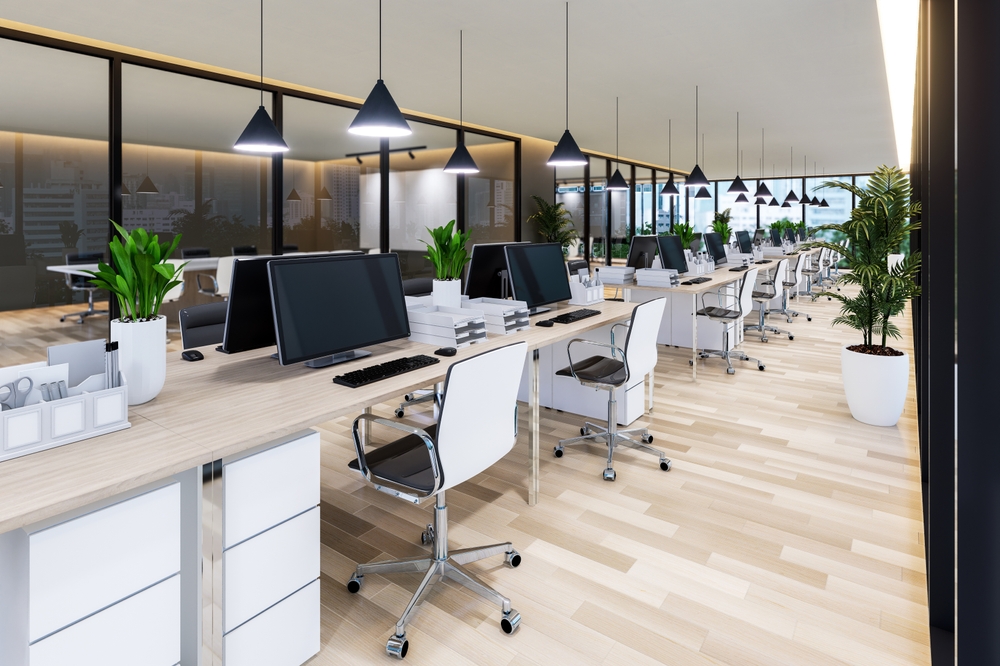
Cost Efficiency
Hot-desking offers significant cost efficiency for organizations by reducing the need for dedicated workstations for each employee. In traditional office settings, a substantial portion of the budget is allocated to office space, furniture, and associated utilities for each employee, regardless of their presence in the office. Hot-desking allows businesses to optimize their real estate usage by accommodating more employees within the same physical space, thereby reducing the overall footprint and associated costs. This model is particularly advantageous for businesses with a large number of mobile or remote workers who do not require a permanent desk. By minimizing unused space, companies can allocate financial resources more effectively, investing in other strategic areas such as technology or employee development.
Flexibility and Space Optimization
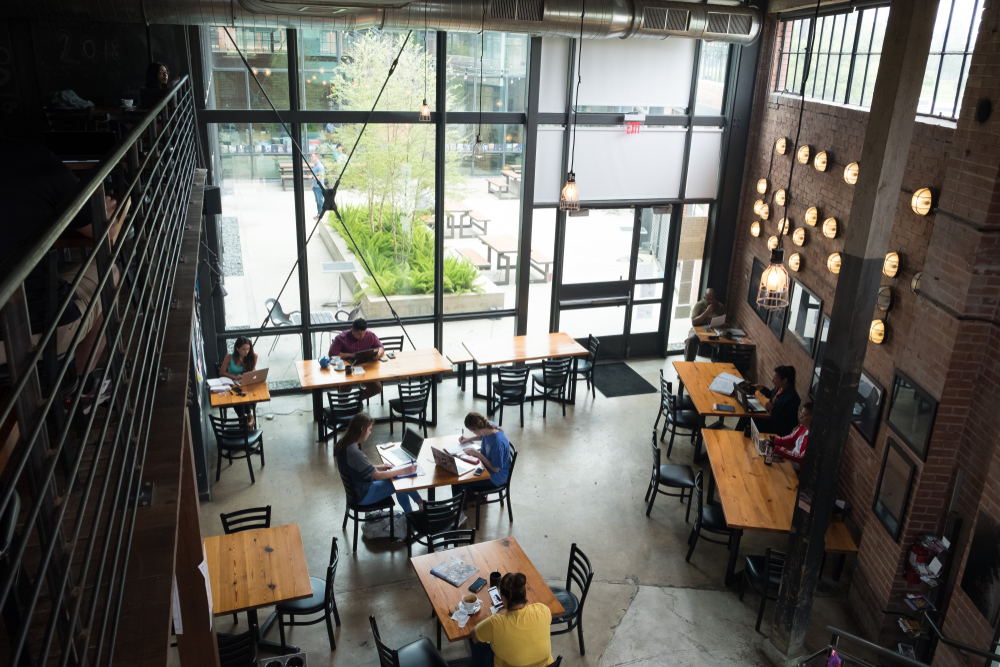
The flexibility inherent in hot-desking is another major advantage, allowing businesses to adapt quickly to changing workforce dynamics without the constraints of fixed office layouts. This flexibility is particularly beneficial in today’s fast-paced business environment, where companies must be agile and responsive to market demands. Hot-desking enables organizations to easily reconfigure their workspace to suit varying team sizes and project needs, maximizing space utilization. This adaptability also supports the growing trend towards hybrid work models, where employees split their time between home and the office. With hot-desking, businesses can efficiently manage the ebb and flow of employees, ensuring that workspace is available as needed without maintaining an excess of unoccupied desks.
Enhanced Collaboration
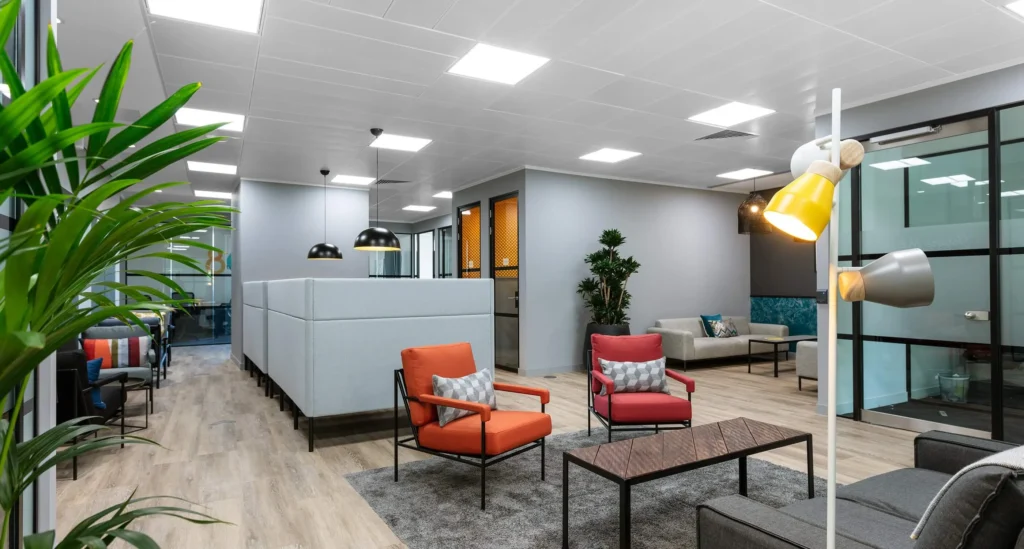
Hot-desking fosters an environment that encourages enhanced collaboration and interaction among employees. By removing the permanence of assigned seating, hot-desking naturally leads to a more dynamic and diverse workplace where employees are exposed to a wider range of colleagues and ideas. This setup breaks down silos, promoting cross-departmental communication and facilitating the exchange of knowledge and skills. As employees move around and interact with different team members, they are more likely to engage in spontaneous discussions and collaborations that can lead to innovative solutions and improved problem-solving. Additionally, hot-desking can contribute to a more inclusive workplace culture by creating opportunities for networking and relationship-building across various levels of the organization. This collaborative spirit not only enhances individual creativity but also drives overall team performance and organizational success.
Challenges of Hot-Desking
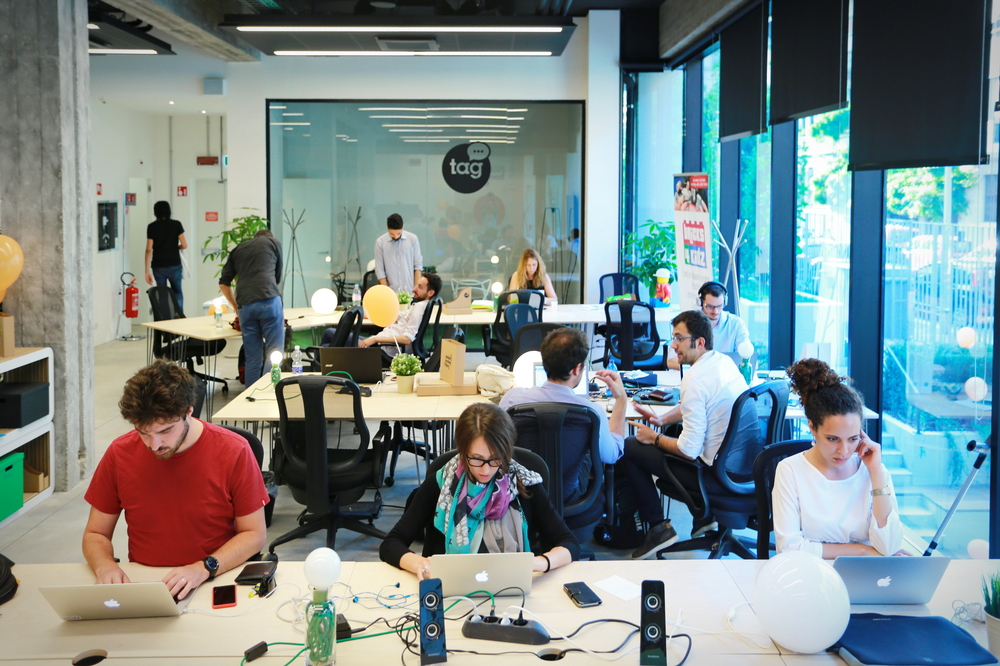
Lack of Personal Space
One of the primary challenges associated with hot-desking is the lack of personal space for employees. In a traditional office setup, having a designated desk allows individuals to create a personalized environment that reflects their work habits and preferences. This personal space can contribute to a sense of ownership and comfort, which can enhance employee satisfaction and productivity. However, in a hot-desking environment, the absence of permanent workstations means that employees cannot customize their surroundings or leave personal items at their desks. This lack of personalization can lead to feelings of detachment or a sense of being transient within the workplace, potentially affecting morale and job satisfaction.
Potential for Distractions
The open and dynamic nature of hot-desking can also increase the potential for distractions. With employees constantly moving and sitting in different locations, the workspace may become more lively and, at times, chaotic. The absence of dedicated spaces can lead to an environment where conversations, phone calls, and other activities in shared areas can become disruptive. For employees who require a quieter setting to concentrate, this can be particularly challenging. While some hot-desking environments attempt to mitigate these issues by designating quiet zones or providing noise-canceling headphones, the overall atmosphere can still be less conducive to focused work compared to traditional office setups.
Impact on Team Dynamics
Hot-desking can also have a significant impact on team dynamics, both positively and negatively. On the one hand, the model encourages interaction and networking across different departments, which can enhance collaboration and innovation. On the other hand, constantly changing seating arrangements can disrupt established team cohesion. Teams that rely on close proximity for effective communication and collaboration may find it challenging to maintain the same level of synergy when members are dispersed throughout a hot-desking environment. This setup can inadvertently hinder team-building efforts and make it more difficult for managers to oversee their teams effectively. To address these challenges, organizations must carefully plan and communicate seating arrangements, ensuring that team needs are balanced with the goals of increased flexibility and collaboration inherent in hot-desking.
Best Practices for Implementing Hot-Desking
Effective Change Management
Implementing hot-desking requires a strategic approach to change management to ensure a smooth transition and employee buy-in. Clear communication is paramount in setting expectations and explaining the benefits and operational details of the new system. Organizations should engage employees early in the process, seeking their input and addressing concerns to foster a sense of ownership and collaboration. Training sessions and informational meetings can help employees adapt to the new environment by providing guidance on how to effectively use shared spaces and resources. It’s also essential to establish clear policies and guidelines that outline how hot-desking will function daily, such as booking procedures, desk etiquette, and cleaning protocols. By proactively managing the change process and involving employees, organizations can minimize resistance and enhance the overall success of the hot-desking initiative.
Use of Technology
The successful implementation of hot-desking is heavily reliant on the effective use of technology. Advanced desk booking systems are crucial, allowing employees to reserve workstations easily and efficiently. These systems should offer real-time availability updates and integrate seamlessly with company calendars to streamline the booking process. Additionally, the use of cloud-based applications and collaboration tools is essential to ensure that employees can access their work and communicate with colleagues from any location. Providing robust Wi-Fi connectivity and ensuring that all necessary equipment, such as docking stations and universal adapters, are readily available at each workstation can further enhance the user experience. By leveraging technology, organizations can facilitate a seamless transition to hot-desking, ensuring that employees have the tools they need to remain productive and connected.
Maintaining Employee Satisfaction
Maintaining employee satisfaction is a critical component of successful hot-desking implementation. To achieve this, organizations must balance the need for flexibility with the individual preferences and comfort of employees. Offering a variety of workspace options, such as quiet zones, collaborative areas, and private meeting rooms, can cater to different work styles and tasks. Regular feedback loops, such as surveys and open forums, allow employees to voice their experiences and suggest improvements, ensuring that the system evolves to meet their needs. Additionally, providing amenities such as lockers for personal belongings and ensuring that shared spaces are clean and well-maintained can contribute to a positive work environment. By prioritizing employee satisfaction and continually adapting to feedback, organizations can create a thriving hot-desking culture that supports productivity and engagement.
Conclusion
Summary of Key Points
Hot-desking has emerged as a popular office strategy that offers numerous advantages, including cost efficiency, flexibility, and enhanced collaboration. By allowing multiple employees to use the same workstations at different times, organizations can significantly reduce their real estate expenses and optimize space utilization. This approach aligns well with the modern workforce’s need for flexibility and the growing trend of hybrid work models. However, implementing hot-desking also presents challenges, such as potential distractions, lack of personal space, and impacts on team dynamics, which require careful management and the use of technology to address effectively. By adopting best practices, such as clear change management strategies, leveraging technology for seamless operations, and prioritizing employee satisfaction, organizations can successfully transition to this model and reap its benefits.
Future of Hot-Desking in Modern Workplaces
As we look to the future, hot-desking is poised to play a significant role in shaping modern workplaces. The trend towards more flexible and agile work environments is likely to continue, driven by technological advancements and evolving employee expectations. As remote work becomes more prevalent, hot-desking offers a practical solution for organizations seeking to balance in-office presence with remote work flexibility. The integration of smart office technologies, such as IoT devices and AI-driven analytics, will further enhance the efficiency and appeal of hot-desking, allowing for real-time space management and personalized workspace experiences.
Moreover, the emphasis on sustainability and efficient resource use will likely drive more companies to adopt hot-desking as a means of reducing their environmental footprint. By minimizing the need for expansive office spaces and promoting shared resources, hot-desking aligns with broader corporate sustainability goals. As businesses continue to adapt to the changing landscape of work, hot-desking is set to remain a vital component of innovative office design, offering organizations a dynamic and responsive way to meet the needs of their workforce while optimizing operational efficiency.




Leave a Reply